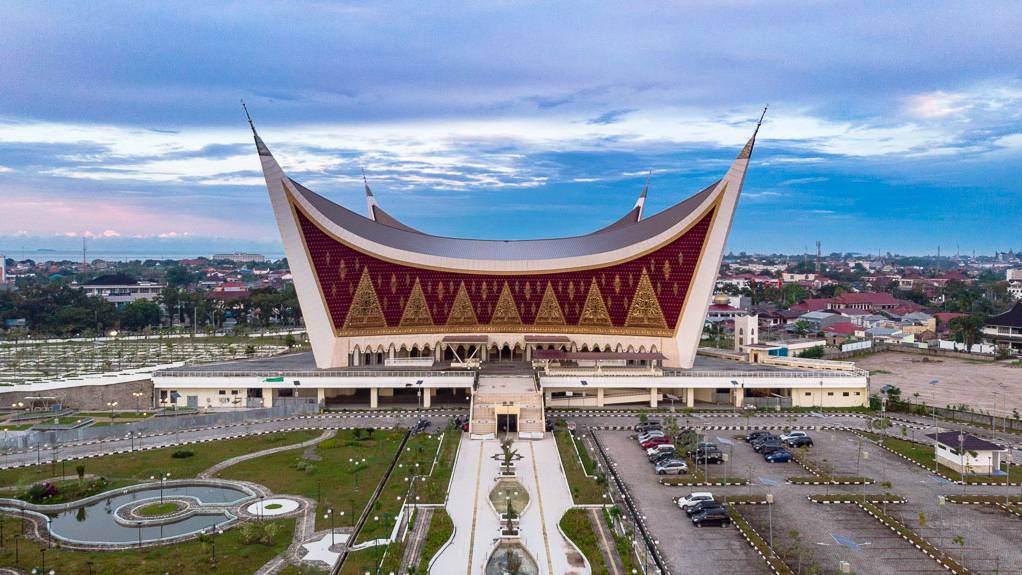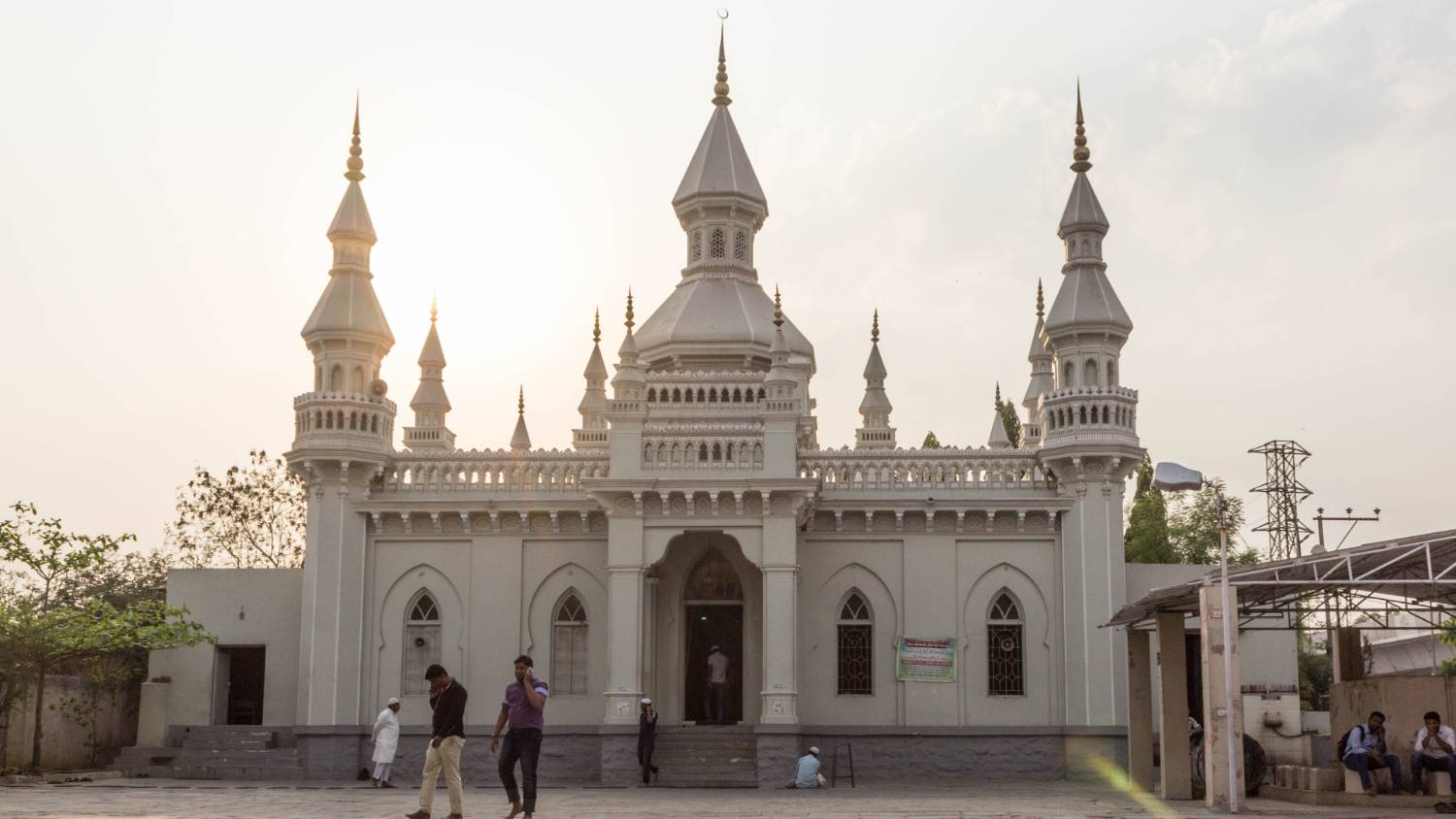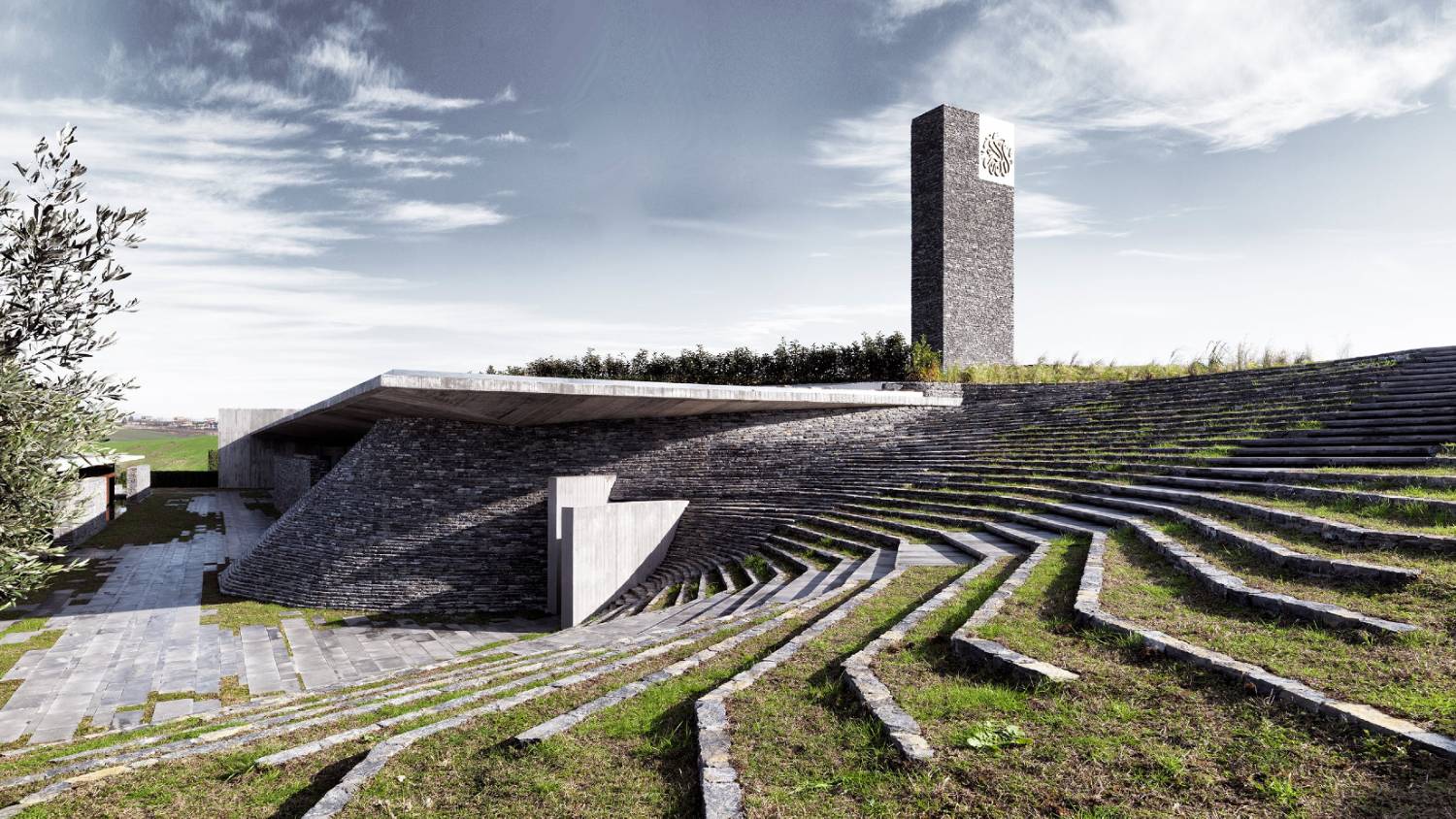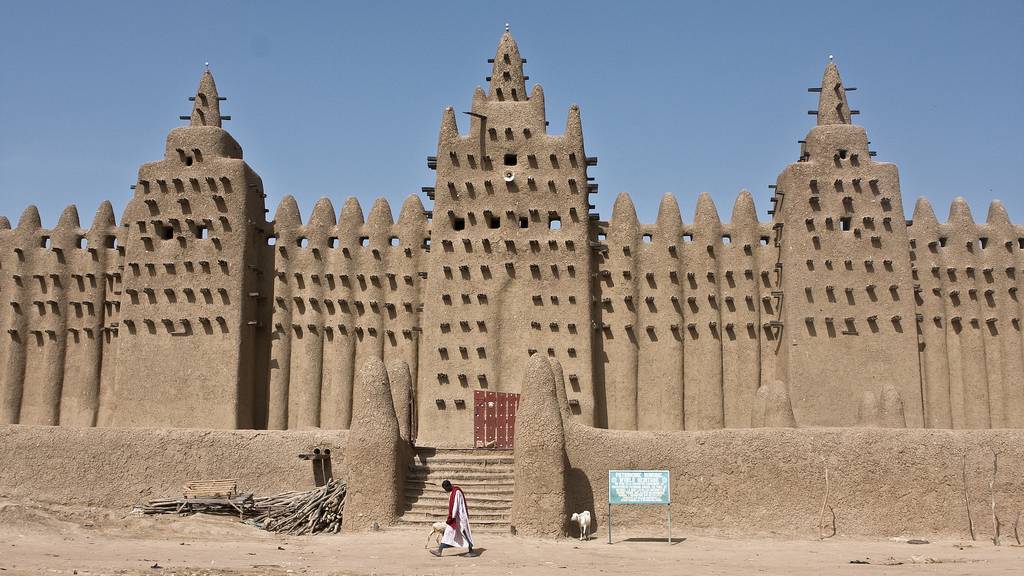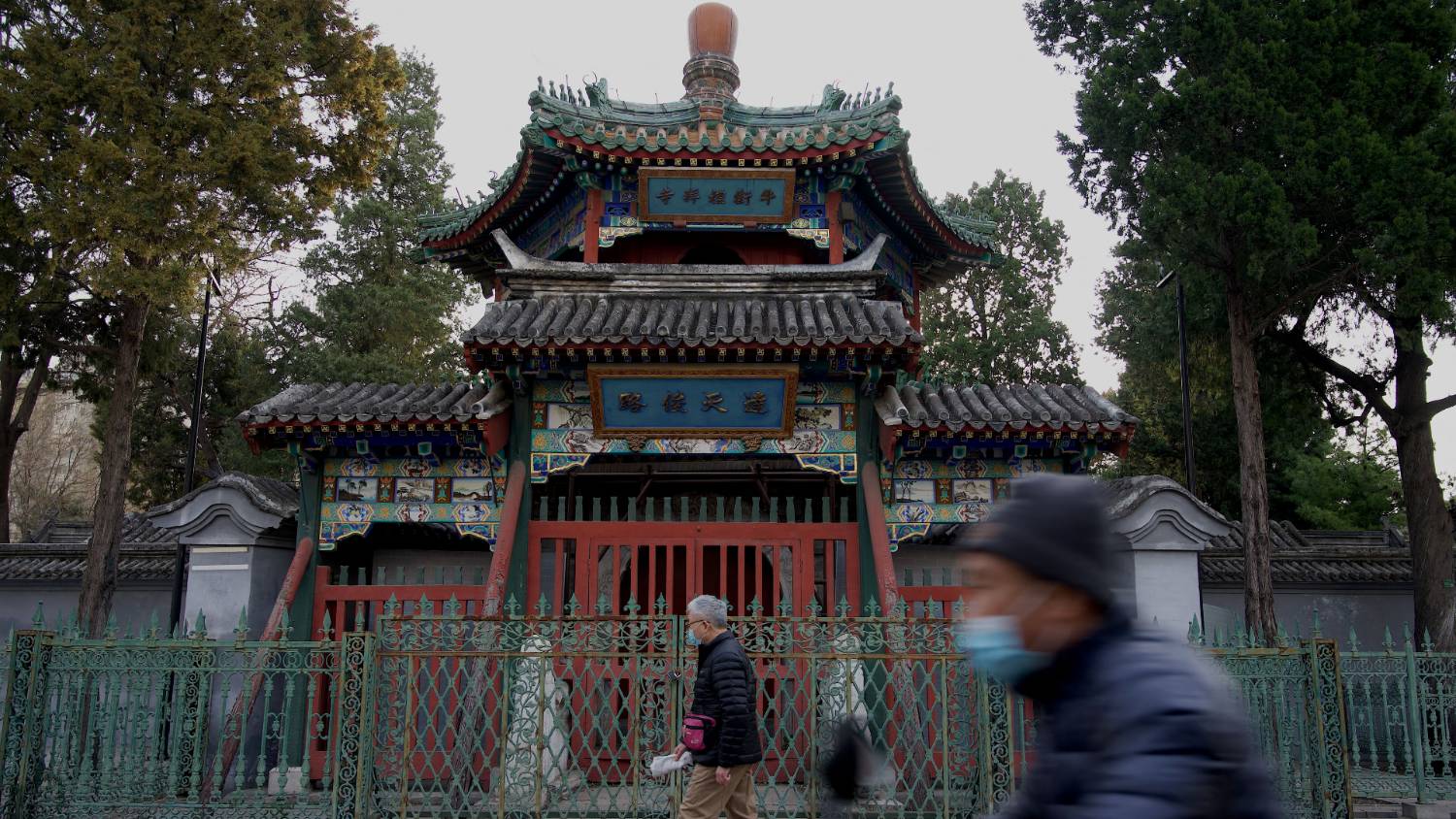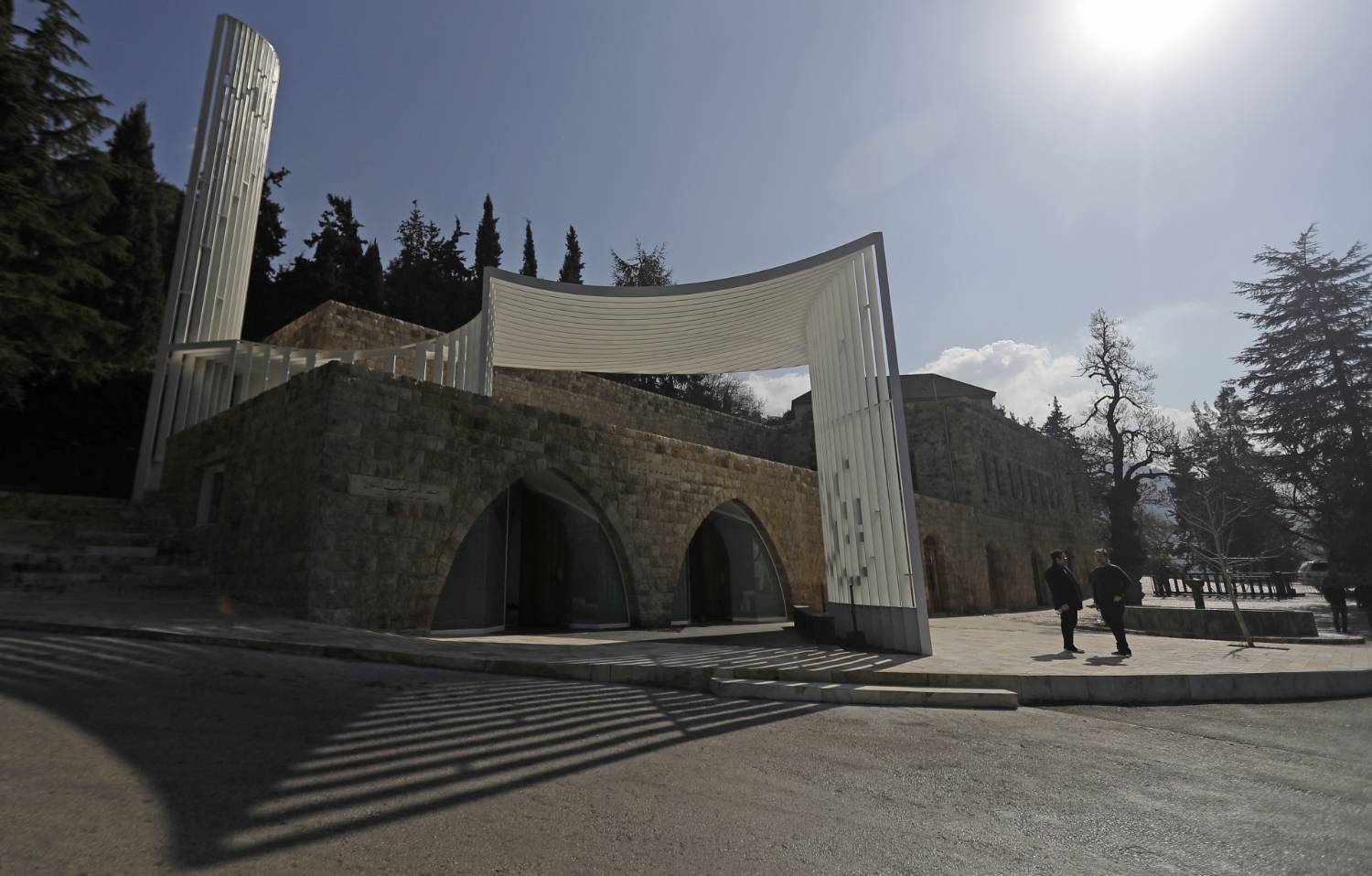Nine different mosque designs from around the world
A mosque or masjid, which means place of prostration in Arabic, is meant to be a clean and tranquil place for Muslims to meet and offer their five daily prayers.
It can be anything from a simple room in a building or home to an elaborate mega-structure. The Quran does not stipulate the design or how a mosque should look, just that it is a clean space, and for worshippers to face the qiblah, the direction that all Muslims pray towards.
Mosque carpets often guide worshippers to face Mecca with their designs, as does the minbar, or pulpit at the front of the main prayer space.
Traditionally, early Muslim communities would often meet quietly in each other’s homes to pray in congregation, but as Islam grew, so did the community’s needs.
Early mosques were simple in design and didn’t have domes or minarets which are common features of mosques today. The muezzin, the one who gives the call to prayer, would stand atop the flattened rooftops to alert people of the time for prayer.
Today, mosques serve multiple social purposes. Some have counselling services, while others function as schools, soup kitchens and even conduct marriages and funeral services.
Around the world, mosques have been built to reflect the cultures from which they stem, some showcasing traditional and unique designs.
Here, we take a look at nine mosques from around the world, and their community’s Muslim heritage.
Grand Mosque of West Sumatra, Indonesia
Islam spread gradually in Indonesia from the 12th century onwards through traders arriving from Arabia. The boom continued into the 14th and 15th centuries in Java through Indian merchants, and it’s here that mosques were built using Javanese teak wood that was abundant and native to the land.
The Menara Kudus Mosque, also known as al-Aqsha Mosque, remains one of the oldest. Built in the 1540s, its design was based on vernacular Indonesian architecture, which has sloping roofs, and added Hindu and Buddhist influences, absorbing local culture and respecting the surrounding environment. Many of these mosques were made from fibre, bamboo and timber.
Today the country has 800,000 registered mosques, serving the needs of the most populous Muslim country.
By the 19th century Persian and Arab influence had trickled across and were reflected in mosque design. The oldest domed mosque in Java is probably Jami Mosque of Tuban, built in 1928, followed by the Kediri Grand Mosque and Al Makmur Mosque of Tanah Abang in Jakarta.
Rizal Muslimin, a local architect, returned to the traditional square hipped-roof design known as minang, when he created the mega dome-less and minaret-free Grand Mosque of West Sumatra, known locally as Masjid Raya Sumatera Barat. It opened its doors in 2014, allowing up to 20,000 worshippers to gather and pray across its three floors.
Muslimin states his inspiration for the mosque was the solution to a dispute that arose in pre-Islamic times. When it came to who would have the honour of placing the sacred Black Stone to the current spot on the eastern side of the Kaaba, Prophet Muhammad decided that it would be placed on a cloth and held by its corners by one representative from each clan from the Quraysh tribe, allowing them all to share the honour.
With a mix of traditional minang carvings and Islamic calligraphy to decorate the mosque's facade, the magnificent structure takes centre stage surrounded by colourfully lit gardens across a 40,343 square-metre complex, in Sumatra’s Padang district.
Putra Mosque, Malaysia
Neighbouring Malaysia shares a similar tale in its introduction to Islam through the arrival of Muslim merchants.
There are now more than 6,000 mosques in Malaysia, according to the Department of Islamic Development, with the oldest being the Kampung Laut Mosque in Tumpat, first built in the early 15th century and moved in 1967 due to the threat of floods.
Early mosques here kept traditional tiered pyramid and pagoda-like towers in their design, like the Kampung Keling Mosque built by wealthy Chinese converts to Islam.
But the Putra Mosque, 25 miles from Kuala Lumpur, has combined Malaysian, Persian and Arabian details.
Iranian Safavid architecture is reflected in the main 116-metre minaret, and the smaller five-tier minarets are said to represent the five pillars of Islam.
Baghdad’s Sheikh Omar Mosque is another cited inspiration for the marble structure, with a 36-diameter main dome, eight smaller ones, and a central prayer hall supported by 12 columns.
A serene courtyard, or sahn, in front of the main entrance welcomes worshippers.
The mosque opened in 1999 next to Perdana Putra, the complex housing the Malaysian prime minister's office. It can accommodate 15,000 worshippers at any one time and offers other services like an auditorium, a dining hall, and a library.
Made of rose-tinted granite and reflected in the Putrajaya Lake surrounding it, this mosque has become a popular tourist spot. But it's not the only pink mosque in the world, other notable ones include the Nasir al-Mulk Mosque in Shiraz, Iran, and the Dimaukom Mosque in Maguindanao, Philippines.
Spanish Mosque, India
In India’s historic city of Hyderabad - once a crossroads for travellers from central Asia, north Africa and Arabia - there sits the Spanish Mosque, known locally as Masjid Iqbal Ud Daula.
Iqbal Ud Daula, son of a ruling prince who had commissioned the mosque in 1900, saw to its completion after his father's death in 1902.
Daula had just returned to India after spending time in Spain and is said to have been inspired by Spanish architecture. The mosque’s design features spiky spires modelled on the churches Daula had been entranced by in the Iberian peninsula. It is said he carried photographs of some of the Spanish sites he wished to rebuild in India.
At the mosque's entrance sits a porch where worshippers remove their shoes before entering. Inside, there are minimal Quranic inscriptions, which are usually plentiful in many other mosques. Two side rooms on either side of the main prayer hall are connected through French-style windows.
Despite having no area for ablution, which is a standard feature in most mosques, it remains an active place of worship for the Secunderabad Muslim community, and is able to accommodate 3000 worshipers at a time.
Sancaklar Mosque, Turkey
In complete contrast to the grand Ottoman mosques that Turkey is renowned for today, the Sancaklar Mosque is blended, almost hidden, in the topography of the landscape.
Winner of the Best Religious Building at the World Architecture Festival in 2013, the mosque in Istanbul’s suburban neighbourhood of Buyukcekmece, was built to resemble a simple cave-like space, the simplicity allowing a deeper connection with God, says its Turkish architect Emre Arolat.
The architecture firm says the hidden prayer space represents “a primary inner world, free from all cultural burdens" and that the disappearance of the building into the slope symbolises getting rid of all temporal and cultural engagements.
From a distance, the only sign of the mosque's presence is a mass of stone, representing a minaret. The prayer space itself is built into the slope of a hill, with slits carved into the qiblah wall to allow daylight to enter subtly from the direction of the Kaaba.
To enter the mosque, worshippers must walk along steps down the hill, where a courtyard awaits. Beside it a teahouse, communal area and a library offer a reflective space.
Faisal Masjid, Pakistan
Pakistan’s national mosque sits beneath the Margalla hills in the country’s capital Islamabad.
Designed by Turkish architect Vedat Dalokay, and funded by Saudi Arabia’s King Faisal, the place of worship is said to be inspired by a Bedouin tent, its geometric sloping roofs becoming a landmark for the country.
Dalokay, who died in 1991, said the mosque also represents the Kaaba itself in an abstract form: “Imagine the apex of each of the four minarets [79 metres tall] as a scaled explosion of the four highest corners of the Ka'aba - thus an unseen Kaaba form is bounded by the minarets at the four corners in a proportion of height to base."
Completed in 1986, the first prayers were held two years later. With 74,000 worshippers accommodated inside the mosque and its courtyard, its capacity can expand to fit 200,000 people when the surrounding grounds are also used.
Inside, mosaics and calligraphy by both Pakistani and Turkish artists decorate the walls.
Pakistan is the second-most populous Muslim country. Its Islamic history begins with the arrival of Muhammad bin Qasim, an Arab general who established power in Sindh in 711.
Kruszyniany Mosque, Poland
A modest wooden mosque - painted green to reflect the forest surrounding it - can be found in the Polish village of Kruszyniany, close to the Belarus border.
Absorbing local traditions, the mosque resembles the nearby wooden churches in its exterior design. The 10-by-13 metre rectangle structure, made of pine, is decorated inside with Quranic verses.
It’s one of only three purpose-built mosques in the country and is said to be the oldest Lipka Tatar mosque in the land.
The Lipka Tatars are Muslim Turkic people from the Golden Horde, who were granted land (now mostly in Poland, Lithuania and Belarus) and religious freedom by the Polish-Lithuanian Commonwealth in return for military service against the Ottoman Empire. After World War II, Muslims from Belarus also settled in the village.
The first mention of this mosque was in 1717 though the exact date of its construction is unknown. A stone plaque by the women’s entrance to the mosque states the building was renovated in 1846.
In Poland 0.1 percent of the population is Muslim. Although there is no exact data, it is estimated that along with the approximate 3,000 Muslim Tatars, there are 30,000 other Muslims who have migrated from elsewhere or who have converted.
The Grand Mosque of Djenne, Mali
This magnificent structure was first built in the 13th century by King Koy Konboro, the 26th ruler of Djenne and the city’s first Muslim king. It remains the largest mud brick building in the world. The story goes that Konboro demolished his palace and built a mosque in its place to show his devotion to Islam.
After falling into disrepair, it was rebuilt in the 19th century in traditional Sudano-Sahel architecture, with the current structure dating back to 1907 and designated a Unesco World Heritage site in 1988.
It's almost 20 metres high and built on a 91-metre-long platform to save it from the floodwaters of the Niger River. Djenne is 390 miles northeast of Bamako, Mali's capital, and is located on the inland delta of the river. After the rainy season the area is often flooded and the structure of the mosque needs to be replastered annually.
Ninety internal wooden columns support the roof and the walls, and the roof has openings - that can be covered by terracotta lids in the rainy season - which allow the mosque to keep cool.
At full capacity, the mosque's prayer hall can hold as many as 3,000 worshippers.
The early presence of Islam in West Africa arrived with the Muslim Berbers and Tuareg merchants in the 9th century. Today 90 percent of Malians are Muslim.
Niujie Mosque, China
In China too it was Arab and Persian merchants who carried their religion with them.
China’s first mosque, Huaisheng Mosque (Lighthouse Mosque) in Guangzhou, dates back to 627 CE.
The Niujie Mosque is the oldest in Beijing. Its name means Ox Street mosque, taken from its location close to a street of butchers in Beijing’s Xuanwu district.
Built in 996 CE, during the Liao Dynasty, it was razed by Mongols and rebuilt under the Ming Dynasty in 1442. In 1696, it was renovated and expanded under the Qing Dynasty, a period in history when many of China’s mosques were built. The ancient silk trade routes facilitated exchanges in goods and intellectual ideologies.
The Hui people are now the largest group of Muslims in China, followed by the Uyghurs. Together they make up about 90 percent of China’s Muslim population, with around 20,000 mosques around the country.
Niujie Mosque follows traditional Chinese wooden palace architecture, but inside there's a mix of Islamic and Han Chinese influences, with Quranic calligraphy and Chinese red wooden panels decorated with gold design.
A unique feature of the mosque is the 10-metre tall Watching Moon Tower, hexagonal in shape and topped with a golden roof. It was once used by the imam to follow the lunar cycle and determine the Islamic months, most importantly, the start of Ramadan.
Amir Shakib Arslan Mosque, Lebanon
This 18th-century village mosque built of local stone has become a symbol for non-denominational worship in Lebanon after it was redesigned and renovated in 2016.
Located in the predominantly Druze village of Moukhtara, southeast of Beirut, Lebanese politician Walid Jumblatt commissioned the new mosque as a way to mark religious tolerance. In Lebanon, the Druze community is considered by some as one of the country’s five Muslim communities, though many don’t identify the group as Muslims.
Jumblatt named the mosque after his grandfather, a Druze aristocrat and writer.
Artistic steel plates have been added to the mosque to create an entrance and minaret. The designers angled the plates in a parallel direction to Mecca.
Depending on the angle the plates are viewed, one can see the word Insan (Arabic for human) at the entrance to the mosque, and Allah at the top of the minaret. The designers say this was done to create "a Hegelian dialectic of God/Man, putting humanity as an integral part of the equation with God, as a reminder of the humanistic tradition of Islam".
Another standout feature is the mosque's carpet. It is uniquely designed with a soundwave pattern, a copy of the mosque’s call to prayer.
The carpet's designer, Lawrence Abu Hamdan, said: "Moments in the soundwaves where the many names for ‘God’ appeared were removed, in part to avoid the possibility of visitors stepping on the word but also to speak to the present absence of the divine that is so fundamental to the esoteric interpretations of Islam.”
This article is available in French on Middle East Eye French edition.
Middle East Eye propose une couverture et une analyse indépendantes et incomparables du Moyen-Orient, de l’Afrique du Nord et d’autres régions du monde. Pour en savoir plus sur la reprise de ce contenu et les frais qui s’appliquent, veuillez remplir ce formulaire [en anglais]. Pour en savoir plus sur MEE, cliquez ici [en anglais].



